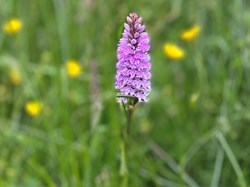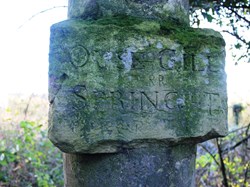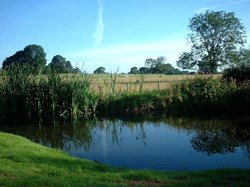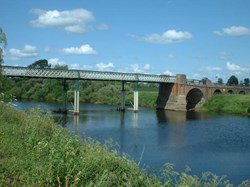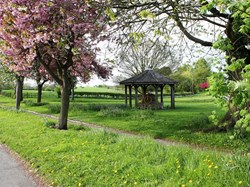Home
The Villages of Great and Little Ouseburn take their name from the river Ouse which starts as Ouse Gill Beck in the garden of the old Great Ouseburn Workhouse. At the original source of the Ouse (the spring now emerges aprox 35 metres away) stands a stone column bearing the inscription ‘OUSE RIVER HEAD’ ‘OUSEGILL SPRING Ft. YORK 13miles BOROUGHBRIDGE 4miles’. -Ouse Gill Beck flows for 4 miles before joining the river Ure (a broad river of 60 miles length). Here, the tiny Ouse Gill Beck usurps the power of the Ure and gives its name to the river which flows through York to the Humber estuary and into the North sea.
Below Great Ouseburn the stream is fed by a perenial spring known as the Stock Well, this spring varies in neither temperature or volume throughout the year, and in severe frost steam rises from the spring. The ditch was widened and banked to form a lake either side of where Little Ouseburn Bridge stands (the lake as now unfortunately silted up through the lowering of a dam). Where the beck entered the lake is an island were in the late 1800’s the writer Edmund Bogg saw a spreading Ash cut down containing 432 Rooks nests, he also states that the waters swarmed with pike and trout, the butter bump or bittern frequented the area and Will o’ the Wisps were seen almost nightly in the marsh meadows
From William the Conqueror’s time until around 1770, the area around Knaresborough was a royal forest within which Great Ouseburn held the status of Forest Liberty Town. In the Domesday Survey it is recorded that the King had 12 carucates of land in ‘Useburne’ in the ‘Borgescire’ region of ‘Eurviscire’ (Yorkshire). Before 1066, the land was held by Alfred, Ramkel, Orm, Thorbrandr and Rawn, there was land for 6 ploughs and it was 1 league long or broad. Travel in the forests was difficult and dangerous and Great Ouseburn’s position on the edge of the forest (its land spanning from the Great North Road to the ancient river crossing of the river Ure and on to the edge of the forest of Galtres) made it an important focus for travellers. The Toll bridge across the Ure was built under a 1772 act of parliament by John Thompson of Kirby Hall on the site of a ferry and river crossing known as Rudforth Wath (Ford). The opening of the Ripon Canal which was authorised by an Act of Parliament in 1767 and opened in 1773 which increased the depth of water and eliminated the ford.
